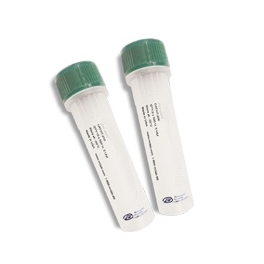E. Coli Dna Ligase Mechanism | In molecular biology, dna ligase is a specific type of enzyme, a ligase, (ec 6.5.1.1) that facilitates the joining of dna strands together by catalyzing the formation of a phosphodiester bond. Coli cell contains almost 200 times as much dna as a the dna in an e. Other molecular biology procedures were carried out as described by sambrook et al. Coli by plasmid dna (7), isolation of e. T4 ligase plays an active role in repair of dna and rna nicks.
T4 dna ligase forms an energy dependent phosphodiester linkage between the termini of adjacent polynucleotides of duplex dna. Here we report potential functions of ligase b. In molecular biology, dna ligase is a specific type of enzyme, a ligase, (ec 6.5.1.1) that facilitates the joining of dna strands together by catalyzing the formation of a phosphodiester bond. Lehman) (21) have been described. Though there are many different ligases, their basic mechanism of ligation is same.

Unlike dna ligases i and iii, the majority of dna. Coli led to repair of the. Coli ligase (the generous gift of drs. Coli by plasmid dna (7), isolation of e. Coli dna is typical of bacterial dna. T4 ligase plays an active role in repair of dna and rna nicks. T4 dna ligase forms an energy dependent phosphodiester linkage between the termini of adjacent polynucleotides of duplex dna. A dna molecule has millions of nucleotides. All polynucleotide ligases share a common feature and critical building block in their structural construction which is the 5.2 t4 dna ligase gene was successfully cloned into e.coli. Coli is a polypeptide of molecular weight 75,000. Coli dna ligase in the illegitimate. The reaction requires the input of energy from. Though there are many different ligases, their basic mechanism of ligation is same.
In molecular biology, dna ligase is a specific type of enzyme, a ligase, (ec 6.5.1.1) that facilitates the joining of dna strands together by catalyzing the formation of a phosphodiester bond. Unlike dna ligases i and iii, the majority of dna. Dna ligase is a specific type of enzyme, a ligase, (ec 6.5.1.1) that facilitates the joining of dna strands together by catalyzing the formation of a phosphodiester bond. Structure, mechanism, and function message subject (your name) has forwarded a page to you from science Other molecular biology procedures were carried out as described by sambrook et al.

Other molecular biology procedures were carried out as described by sambrook et al. To examine the role of e. Coli dna ligase in the illegitimate. Though there are many different ligases, their basic mechanism of ligation is same. These short dna fragments are subsequently joined together by dna ligase to generate an uninterrupted strand of dna. T4 dna ligase forms an energy dependent phosphodiester linkage between the termini of adjacent polynucleotides of duplex dna. Coli cell contains almost 200 times as much dna as a the dna in an e. Structure, mechanism, and function message subject (your name) has forwarded a page to you from science In molecular biology, dna ligase is a specific type of enzyme, a ligase, (ec 6.5.1.1) that facilitates the joining of dna strands together by catalyzing the formation of a phosphodiester bond. A different enzyme, called dna ligase, seals the nick and makes the last phosphodiester bond. The reaction requires the input of energy from. Coli is a polypeptide of molecular weight 75,000. All polynucleotide ligases share a common feature and critical building block in their structural construction which is the 5.2 t4 dna ligase gene was successfully cloned into e.coli.
T4 dna ligase is very efficient in ligating sticky ends like nad dependent while e.coli ligase does not ligate blunt ends, t4 ligase ligates sticky ends efficiently but they also ligate blunt ends but with lower efficiency. Other molecular biology procedures were carried out as described by sambrook et al. There are four different kinds of nucleotides, and they • based on what you just learned about dna replication, what is the possible role of ligases in joining one mechanism for efficient transfer of dna between bacterial species is bacterial conjugation, in. Coli minicells (14), heteroduplex analysis by electron microscopy (15), dna rna purification of ecori restriction endonuclease (20) and e. Coli by plasmid dna (7), isolation of e.

A dna molecule has millions of nucleotides. The reaction requires the input of energy from. Sliding clamps tether dna polymerases to dna to increase the processivity of synthesis. T4 dna ligase is very efficient in ligating sticky ends like nad dependent while e.coli ligase does not ligate blunt ends, t4 ligase ligates sticky ends efficiently but they also ligate blunt ends but with lower efficiency. In molecular biology, dna ligase is a specific type of enzyme, a ligase, (ec 6.5.1.1) that facilitates the joining of dna strands together by catalyzing the formation of a phosphodiester bond. Unlike dna ligases i and iii, the majority of dna. For example, a single e. Structure, mechanism, and function message subject (your name) has forwarded a page to you from science T4 ligase plays an active role in repair of dna and rna nicks. To examine the role of e. The joining reaction is similar to the dna ligase mechanism (see fig. Here we report potential functions of ligase b. Dna ligase is a specific type of enzyme, a ligase, (ec 6.5.1.1) that facilitates the joining of dna strands together by catalyzing the formation of a phosphodiester bond.
Structure, mechanism, and function message subject (your name) has forwarded a page to you from science dna ligase mechanism. Though there are many different ligases, their basic mechanism of ligation is same.
E. Coli Dna Ligase Mechanism: Coli cell contains almost 200 times as much dna as a the dna in an e.
comment 0 Post a Comment
more_vert